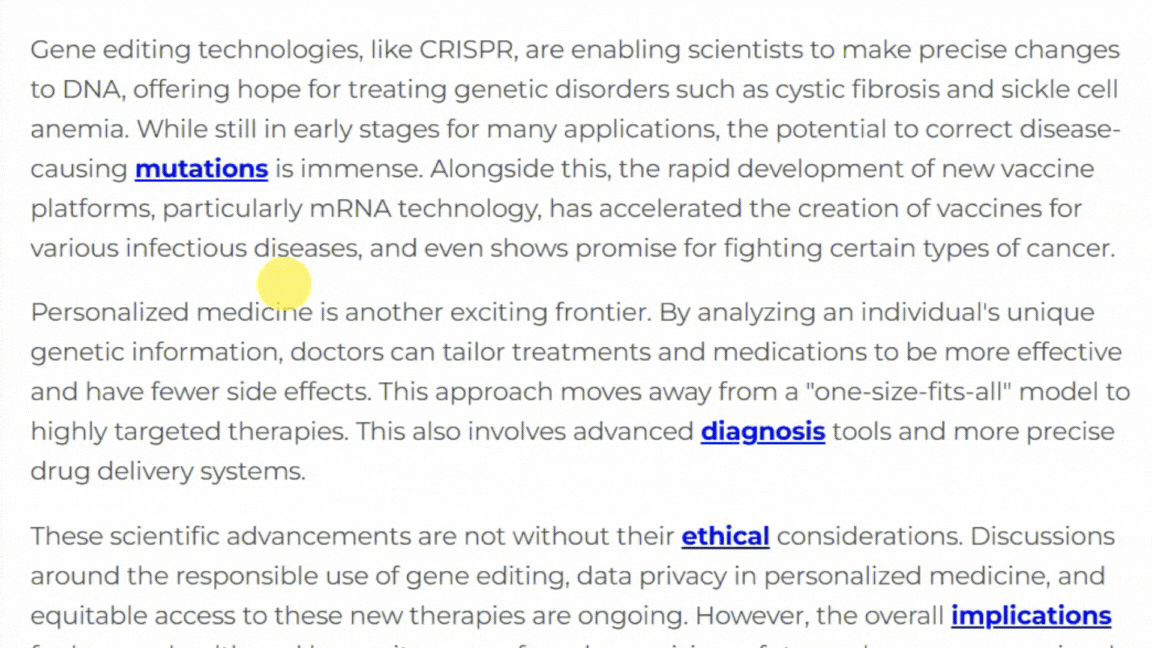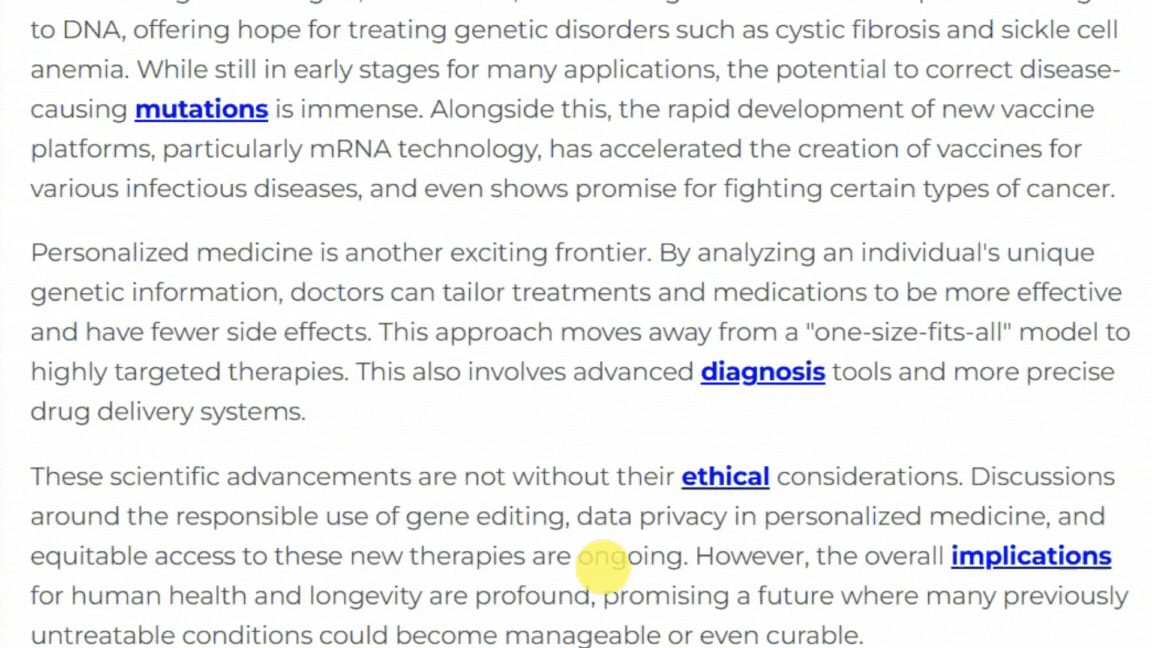Amber Talk
Enhance Your Conversation
- Login
- / Sign Up
Amber Talk
Enhance Your Conversation

Improve Your English Skills
Please enter your email to get more information on how to improve your English skills and to continue with the Article.

Neurotechnology
News Audio Player
News Audio Player
Scroll Down For Speaking Practice
The exciting field of Neurotechnology involves developing tools and devices that interact directly with the nervous system, especially the brain. At its forefront are Brain-Computer Interfaces (BCIs), systems that create a direct communication pathway between a brain and an external device. These technologies work by detecting and interpreting the electrical or chemical signals produced by brain cells, known as neurons, and translating these neural signals into commands for computers or machines.
The potential uses of neurotechnology and BCIs are vast and transformative, particularly in medicine. For individuals with paralysis or severe motor impairments, BCIs offer new hope for regaining independence. They can enable control over robotic prosthetics, allowing users to move artificial limbs with their thoughts. Furthermore, BCIs can restore communication for those unable to speak or type, by translating brain activity into text or speech. This technology also holds promise in rehabilitation, helping patients recover motor function after strokes or injuries.
Beyond medical applications, neurotechnology could eventually extend to enhancing human capabilities, from improving memory and learning to enabling direct interaction with digital environments. However, such advancements also raise profound ethical questions.
One major concern is confidentiality: what happens to the sensitive brain data collected by these devices? Who owns it, and how will it be protected from misuse or unauthorized access? Another critical aspect is autonomy, considering how direct brain interfaces might influence a person's sense of self or decision-making. Questions also arise about equitable access to these powerful technologies, ensuring they don't create new societal divides. Addressing these complex ethical considerations is paramount as neurotechnology continues its rapid development.
Let's Talk About It!
- 1. What is your first thought about connecting brains to computers?
- 2. How could BCIs help people with disabilities?
- 3. What are "neural signals," and why are they important for BCIs?
- 4. Do you think BCIs should be used to enhance human abilities, not just for medical needs?
- 5. What are the biggest ethical concerns about neurotechnology?
- 6. How can we ensure the privacy of brain data collected by BCIs?
- 7. Would you ever consider using a BCI? Why or why not?
- 8. How might neurotechnology change education or learning in the future?
- 9. Do you think robots will ever have feelings or consciousness?
- 10. What is one positive future scenario you can imagine with neurotechnology?
Article Vocabulary Instructions
Click to Enlarge

Click to Enlarge
